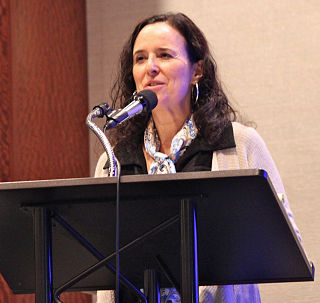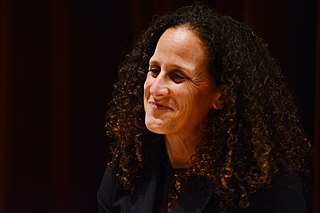
Ashkenazi Jews, also known as Ashkenazic Jews or Ashkenazim, are a Jewish diaspora population who coalesced in the Holy Roman Empire around the end of the first millennium CE. Their traditional diaspora language is Yiddish, which developed during the Middle Ages after they had moved from Germany and France into Northern Europe and Eastern Europe. For centuries, Ashkenazim in Europe used Hebrew only as a sacred language until the revival of Hebrew as a common language in 20th-century Israel.

Sepharadi Jews, also known as Sephardic Jews or Sepharadim, and sometimes referred to by modern scholars as Hispanic Jews, are a Jewish diaspora population who coalesced in the Iberian Peninsula. The term Sepharadim, derived from Hebrew Sefarad, also refers to the Mizrahi Jews of Western Asia and North Africa. Although the millennia-long established latter groups do not have ancestry from the Jewish communities of Iberia, the majority of them were influenced by the Sephardi style of liturgy, law, and customs from the influence of the Andalusian schools and Maimonides; many Iberian Jewish exiles later sought refuge in those pre-existing Jewish communities over the course of the last few centuries, resulting in their integration with those communities.
Mizrahi Jews, also known as Mizrahim (מִזְרָחִים) or Mizrachi (מִזְרָחִי) and alternatively referred to as Oriental Jews or Edot HaMizrach, are a grouping of Jewish communities comprising those who remained in the Land of Israel and those who existed in diaspora throughout and around the Middle East and North Africa (MENA) from biblical times into the modern era.
Jewish ethnic divisions refer to many distinctive communities within the world's ethnically Jewish population. Although considered a self-identifying ethnicity, there are distinct ethnic subdivisions among Jews, most of which are primarily the result of geographic branching from an originating Israelite population, mixing with local communities, and subsequent independent evolutions.

Ruth Behar is a Cuban-American anthropologist and writer. Her work includes academic studies, as well as poetry, memoir, and literary fiction. As an anthropologist, she has argued for the open adoption and acknowledgement of the subjective nature of research and participant-observers. She is a recipient of the Belpré Medal.
Jewish Cubans, Cuban Jews, or Cubans of Jewish heritage, have lived in the nation of Cuba for centuries. Some Cubans trace Jewish ancestry to Marranos who came as colonists, though few of these practice Judaism today. The majority of Cuban Jews are descended from European Jews who immigrated in the early 20th century. More than 24,000 Jews lived in Cuba in 1924, and still more immigrated to the country in the 1930s. Following the 1959 communist revolution, 94% of the country's Jews emigrated, most of them to the United States. In 2007 an estimated 1,500 known Jewish Cubans remained in the country, overwhelmingly located in Havana. Several hundred have since emigrated to Israel.
Italian Jews or Roman Jews can be used in a broad sense to mean all Jews living in or with roots in Italy, or, in a narrower sense, to mean the Italkim, an ancient community living in Italy since the Ancient Roman era, who use the Italian liturgy as distinct from those Jewish communities in Italy dating from medieval or modern times who use the Sephardic liturgy, the Italian Nusach or the Nusach Ashkenaz.

Haim Aharon Valero (1845–1923) was a banker, entrepreneur and a prominent figure in the Jewish community of 19th century Jerusalem. Under his direction, the Valero Bank, founded in 1848 by his father Jacob, acted as catalyst in the development of the Jewish community under Ottoman rule. The bank's capital and financial services were employed in the acquisition of land and building, helping transform Jerusalem and nearby townships from stagnation and poverty towards the modernization of the 20th century.

Syrian Jews are Jews who lived in the region of the modern state of Syria, and their descendants born outside Syria. Syrian Jews derive their origin from two groups: from the Jews who inhabited the region of today's Syria from ancient times ; and from the Sephardi Jews who fled to Syria after the Alhambra Decree forced the expulsion of the Jews from Spain in 1492.

The American Sephardi Federation, a founding member of the Center for Jewish History, is a non-profit Jewish organization that strengthens and organizes the religious and cultural activities of Sephardic Jews, preserves Sephardic heritage, tradition and culture in the United States, and assists in the publication of books and literature dealing with the Sephardic culture and tradition. The federation also works to further awareness of the former existence of large Jewish communities in the Muslim and Arab world.
Abraham and Eugenia: Stories From Jewish Cuba is a 1994 documentary directed by American Bonnie Burt.

Trees Cry for Rain: A Sephardic Journey is a short documentary film by American documentary filmmaker Bonnie Burt that follows "America's Internet Champion of Ladino" Rachel Amado Bortnick, as she explores her Jewish-Turkish heritage and the vanishing world of Sephardic culture and the Ladino language. The film was officially released in 1989, but drew public attention in 1992 with screenings at a number of Jewish film festivals worldwide, including the San Francisco Jewish Film Festival and the Madrid "Festival de Cine Judio" which was dubbed "the biggest Jewish cultural event held in Spain in 500 years". This was followed by a public screening at the Lincoln Center for the Performing Arts in New York, and airing on The Jewish Channel.

Moroccan Jews are Jews who live in or are from Morocco. Moroccan Jews constitute an ancient community dating to Roman times. Jews began immigrating to the region as early as 70 CE. They were later met by a second wave of migrants from the Iberian peninsula in the period which immediately preceded and followed the issuing of the 1492 Alhambra Decree, when Jews were expelled from Spain, and soon afterward, from Portugal. This second wave of immigrants changed Moroccan Jewry, which largely embraced the Andalusian Sephardic liturgy, to switch to a mostly Sephardic identity.

Sephardic Bikur Holim Congregation (SBH) is a Sephardic congregation with a synagogue in the Seward Park neighborhood of Seattle, Washington. The name Bikur Holim means visiting or comforting the sick, an important mitzvah. The first official name of the congregation was Spanish Hebrew Society and Congregation Bikur Holim, shortened to "Sephardic Bikur Holim". For a time in the 1930s, after amalgamation with another congregation, it was known as Bikur Holim Ahavath Ahim Congregation.
Genetic studies on Jews are part of the population genetics discipline and are used to analyze the chronology of Jewish migration accompanied by research in other fields, such as history, linguistics, archaeology, and paleontology. These studies investigate the origins of various Jewish ethnic divisions. In particular, they examine whether there is a common genetic heritage among them.

The 1927 murder in Turkey of a Jewish woman named Elza Niego by a Turkish official sparked an anti-government demonstration at her funeral that authorities regarded as criminal. The Turkish government alleged that the slogans used in the manifestations were against Turkishness. Following the demonstration, ten Jewish protestors were detained, who were released after thirty days.
Ruth Fredman Cernea was an American cultural anthropologist, who dedicated virtually all her field research and writings to the analysis of Jewish culture and symbols, in various settings.
Sephardic Bnei Anusim is a modern term which is used to define the contemporary Christian descendants of an estimated quarter of a million 15th-century Sephardi Jews who were coerced or forced to convert to Catholicism during the 14th and 15th century in Spain and Portugal. The vast majority of conversos remained in Spain and Portugal, and their descendants, who number in the millions, live in both of these countries. The small minority of conversos who did emigrate normally chose to emigrate to destinations where Sephardic communities already existed, particularly to the Ottoman Empire and North Africa, but also to more tolerant cities in Europe, where many of them immediately reverted to Judaism. Although a few of them traveled to Latin America with colonial expeditions, doing so was particularly difficult, since only those Spaniards who could certify that they had no recent Muslim or Jewish ancestry were allowed to travel to the New World. But the constant flow of Spanish emigration to Latin America until well into the 20th century resulted in many Latin Americans having Converso ancestry, in the same way that many modern Spaniards do.

Henry Alan Green is a Professor of Religious Studies at the University of Miami, and has taught there since 1984. After completing postgraduate work at the Hebrew University of Jerusalem, the University of Oxford, and the Sorbonne, he received his Ph.D. in Religion from St. Andrew's University in 1982. He is the published author or co-author of four books and numerous articles, and has received recognition for his work on documenting the exodus of Jews from Arab countries after the Second World War.

Sarah Abrevaya Stein is a prominent American historian of Sephardic Jewry.












